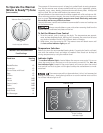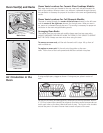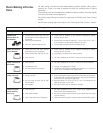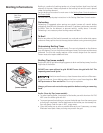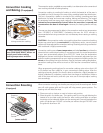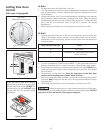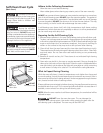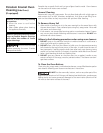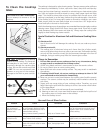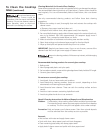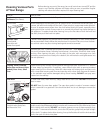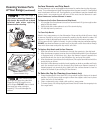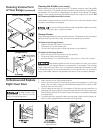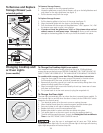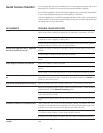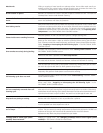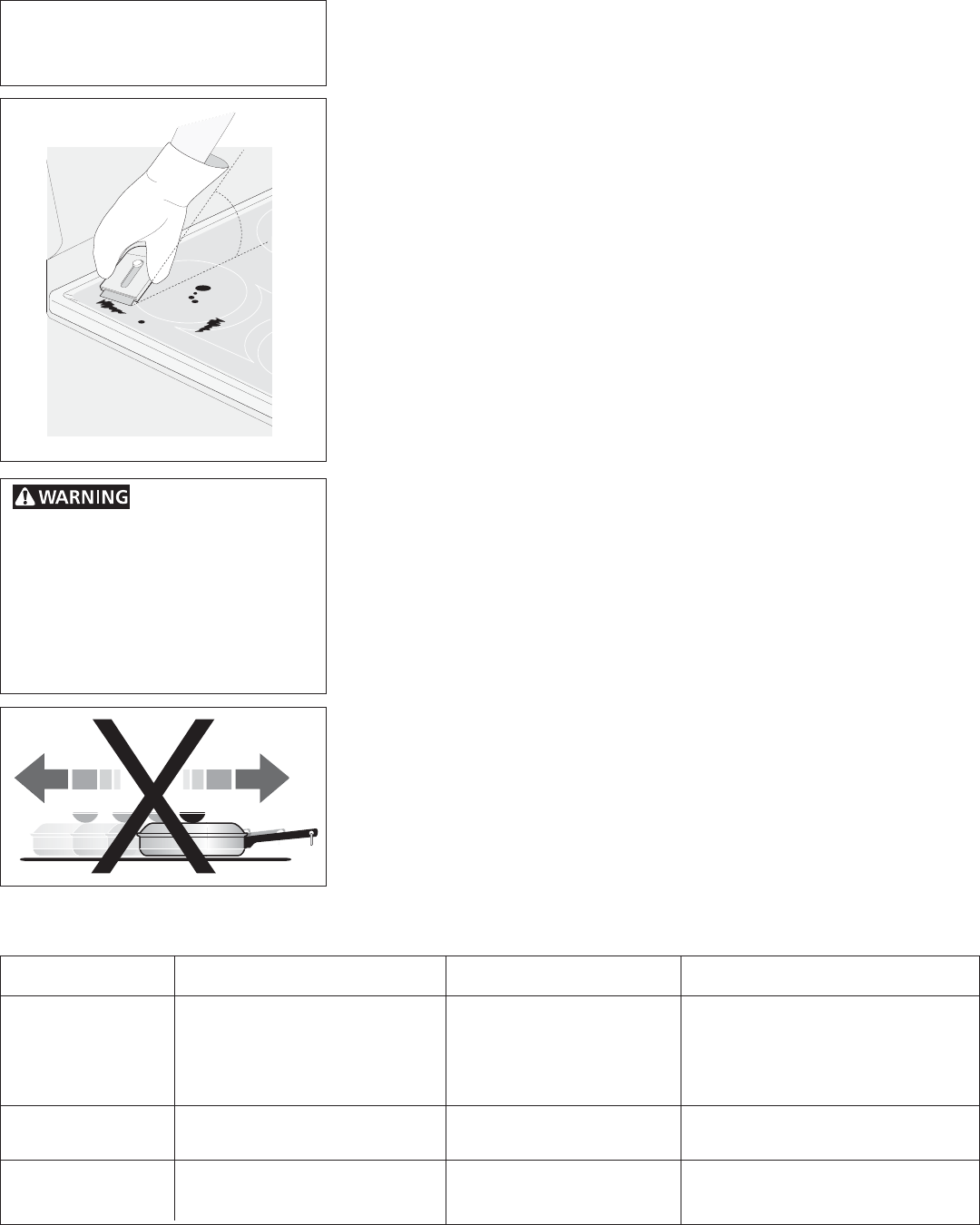
18
30°
The cooktop is designed to make cleaning easier. Cleanups are easy when spillovers
are cleaned up immediately. To clean, wipe with a clean, damp cloth and wipe dry.
Correct and consistent leaning is essential to maintaining your heat-resistant glass
top. Spills and spatters should be wiped up using a clean paper towel and sudsy
water. This should be done either as soon as possible after the spill occurs, after
cooking is completed, or at the latest, before using the cooktop again. Use caution
if the cooktop is hot. For heavy spills, spatter or burned-on materials, use a razor
blade scraper. Hold the razor blade scraper at no more than a 30° angle and re-
move food spills or burned on food residue.
Finish the cleaning process by applying a recommended heat-resistant glass cooktop
cleaning cream. Apply cleaner with clean, damp paper towel. Rinse with a paper
towel dampened with clean water and wipe dry. Always wipe the cooktop thor-
oughly to avoid heating any cleaner residue.
Special Caution for Aluminum Foil and Aluminum Cooking Uten-
sils
1) Aluminum foil
Use of aluminum foil will damage the cooktop. Do not use under any circum-
stances.
2) Aluminum utensils
The melting point of aluminum being much lower than that of other metals,
care must be taken when aluminum pots or pans are used. If allowed to boil dry,
not only will the utensil be ruined, but also permanent damage in the form of
breakage, fusing or marking may affect the ceramic glass surface.
Things to Remember
1. Do not slide utensils across cooktop surface in any circumstance, doing
so may scratch or metalmark the cooktop surface.
2. AVOID using bleach and don’t use ammonia to clean the ceramic surface.
3. Do not put plastic items on warm cooking areas.
4. Never slide oven racks across cooktop surface. They may scratch or metalmark
the cooktop.
5. If cooktop should break, do not use cooktop or attempt to clean it. Call
your authorized service technician immediately.
6. Never use a trivet or metal stand between the cooking utensil and the ceramic
cooktop. The ceramic surface may be scratched, metal marked or etched by
such items.
7. Sugary spills can cause pitting of your cooktop surface. Therefore, you must
begin cleaning the spills while the cooktop is still hot. Use caution when follow-
ing the steps below.
a) Turn off all surface units and remove all pans immediately.
b) Wearing an oven mitt, use a razor blade scraper to scrape the hot spill out of
the cooking zone to a cooler area on the cooktop.
c) Allow the cooktop to cool.
Use and Care of Glass Surface
Problem
Fine ”brown lines“
(tiny scratches or
abrasions which have
collected soil).
Metal marking (mark
or black marks).
Brown streaks and
specks.
Cause
Coarse particles (salt, sand, sugar
or grit) between bottom of cook-
ware and cooktop that are not re-
moved before cooking.
Using incorrect cleaning materials.
Sliding or scraping metal utensils or
oven shelves across cooktop.
Cleaning with a sponge or dish-
cloth that has been used for other
kitchen tasks.
To Remove
Tiny scratches are not removable. They
can be minimized by continual use of
cleaner cream. Such scratches do not
affect cooking.
Apply cleaner cream with dampened
paper towel to a cooled surface.
Use a small amount of cleaner cream
with clean, damp paper towel.
To Prevent
Clean cooktop after every use.
Daily use of cleaner cream.
Do not slide cookware across
cooktop.
Use cleaner cream cloth with
clean, damp paper towel.
To Clean the Cooktop
Glass
THIS COOKTOP IS NOT REMOVABLE.
Do not attempt to remove or lift the
cooktop.
DO NOT use a cooktop
cleaner on a hot cooktop. The fumes can
be hazardous to your health, and can
chemically damage the ceramic-glass
surface. Be sure the controls are turned
to OFF. Do not use commercial oven
cleaners on any part of the cooktop.
Damage to the finish or parts could re-
sult.



